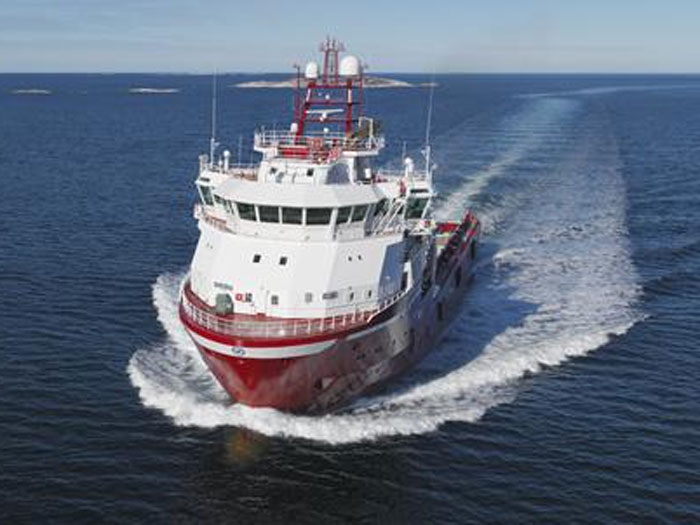
ABB’s onboard DC grid gains ABS Approval in Principal
Written by Nick Blenkey
PSV Dina Star is first vessel to be equipped with ABB onboard DC grid
JANUARY 27, 2014 — ABS has granted Approval in Principal (AIP) to the ABB onboard DC grid power distribution system.
ABB says that onboard DC grid,is one of the most flexible marine power and propulsion systems ever brought to market.
In traditional electrical propulsion systems, multiple DC connections are made to thrusters and propulsion drives from an alternating current (AC) circuit, accounting for more than 80 percent of electrical power consumption. ABB’s onboard DC grid distributes power through a single DC circuit providing significant power savings.The system allows generators to operate at variable speed which in turn offers up to 20% fuel savings over a conventional plant with significant space savings potential, improved dynamic response and reduced emissions. In addition, ABB’s solution enables supplementary DC energy sources including solar panels, fuel cells or batteries to be plugged directly into the ship’s DC electrical systems, creating scope for further fuel savings.
The first vessel powered by the ABB onboard DC grid system, the platform support vessel Dina Star, delivered to Norwegian offshore owner Myklebusthaug Offshore last year by shipbuilder Kleven Verft, was nominated for the 2013 Energy Efficiency award at Nor-shipping.
Approval in principle confirms onboard DC grid’s suitability for marine application. In order to be granted the AIP, the onboard DC grid was subject to a series of risk assessment analyses to determine if the concept provides acceptable levels of safety in line with current marine industry practice, requirements and standards.
“The implications and importance of AIP put ABB in a particularly advantageous position in the global marine market for the Onboard DC Grid solution” says Heikki Soljama, head of ABB’s Marine and Cranes Business Unit. “Our clients can feel comfortable that the solution can be applied to their next project and the basic concept acceptance and the clear path toward final classification approval for construction has been obtained.”





Leave a Reply
You must be logged in to post a comment.